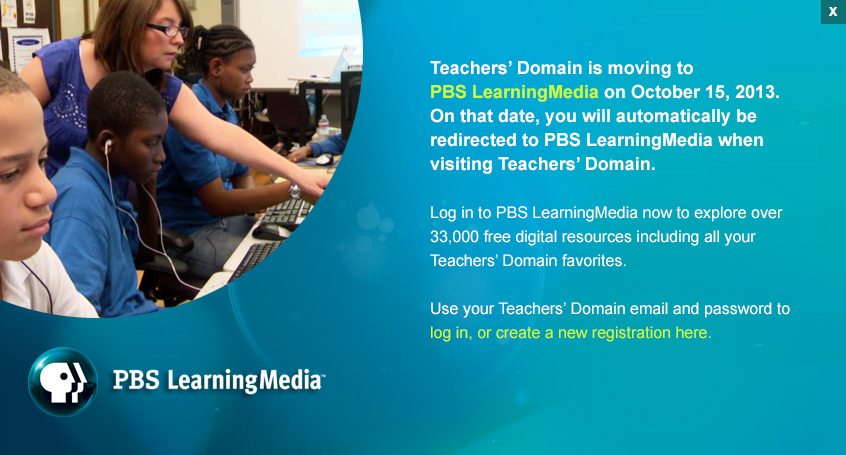Teachers' Domain - Digital Media for the Classroom and Professional Development
User: Preview
Albert Einstein is one of the most widely recognized scientists of all time. Ironically, his scientific discoveries are also some of the most difficult to comprehend. This lesson gives an overview of two of his most famous theories -- special relativity and general relativity -- and a glimpse into what he was thinking as he developed them. The concepts covered in this lesson are advanced for some high school physics courses and may not be useful for all classes. Students are expected to have a firm grasp of classical kinematics (the study of motion in different frames of reference). This lesson is intended for those teachers who are already dealing with relativity in their classes and are looking for supplemental resources.
Students begin by watching a video segment and working through an interactive activity on the thought experiments that led Einstein to his special theory of relativity. Then they watch two more video segments that introduce the idea of general relativity and Einstein's quest to explain the forces of gravity, electricity, and magnetism as a single unified force, which he called the unified field theory.
1. Start with a discussion about relative motion, using the following classic examples: tossing a ball on a moving train, or driving on a highway toward or away from other moving vehicles.
2. Show the video Einstein's Special Theory of Relativity and lead a discussion on how objects moving at the speed of light differ from those moving at slower speeds. How does Einstein's postulation that nothing can travel faster than light change the ideas of relative motion? If students do not pick up on this themselves, pose the following challenge: A person stands on a train that is traveling at some velocity (v), and points a flashlight straight ahead (in the same direction as the motion of the train). An observer watches the oncoming train from the side of the tracks. To the observer, how fast does the light appear to travel?
3. Have students work in groups to go through the Think Like Einstein interactive activity. Have them discuss each question as a group until they can understand the correct answer.
4. Have each group create an "Einsteinian thought experiment" for the rest of the class. Each thought experiment should ask what would happen in a given situation where the relative motion of two objects is involved, preferably objects that are moving close to the speed of light. Let each group pose their challenge to the class and lead the discussion about it.
5. Start by discussing students' conceptions of gravity. Ask:
Tell students that these are questions that physicists are still grappling with, so you don't expect them to come up with a "right" answer. The point of this discussion is primarily to have students struggle with some of the same difficult concepts that physicists struggle with. Most students learn the formulae for gravitational force without ever asking what causes it. By digging deeper, they may begin making analogies to magnetism and electricity. Encourage the development of these analogies, but be sure to help them identify where the model breaks down. For example, electricity is the interaction between positive and negative charges. Does gravity involve charges? All magnets have two poles (regions where the magnetic force is strongest). Does gravity have poles? Through this, they will start to discover some of the same relationships that Einstein observed when searching for a unified theory.
6. Show the video String Theory: A New Picture of Gravity and discuss the following:
The space-time grid is a very abstract model and may not work for some students. Encourage them not to give up if they cannot visualize how space and time are connected this way. Rather, emphasize that gravity can be thought of as disturbances in the grid, similar to electromagnetic waves created by changing electric and magnetic fields.
7. Show the video String Theory: A Theory of Everything?. Lead a discussion on why a unified theory is so attractive to physicists. Ask:
Have students discuss the following:
 Teachers' Domain is proud to be a Pathways portal to the National Science Digital Library.
Teachers' Domain is proud to be a Pathways portal to the National Science Digital Library.
